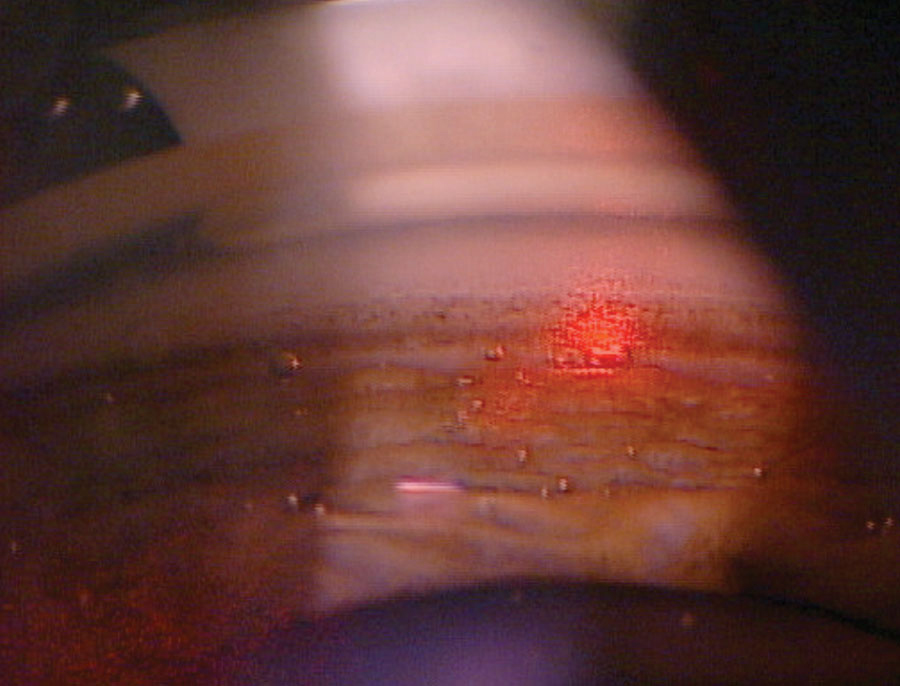 |
|
ODs are able to perform selective |
As scope of practice laws continue to evolve in the United States, a handful of states now allow optometrists to perform selective laser trabeculoplasty (SLT). Across the pond in the UK, a new poll-based study that considered the acceptability, training requirements and barriers for optometrists to administer SLT found that patients embraced ODs taking on this additional responsibility. Those queried also believed the overburdened UK National Healthcare System would benefit, but also felt there was a need for standardized training and strict governance for ODs taking on this role.
“Hearing from patients, optometrists, ophthalmologists and hospital managers and finding out how acceptable and feasible optometrist-delivered SLT is can help policy-makers overcome current difficulties and plan for a nationwide optometrist-delivered service,” says investigator Evgenia Konstantakopoulou, MCOptom, MSc, PhD, a research fellow at the Moorfields Eye Hospital. “This could improve accessibility and continuity of care, possibly allowing more patients to stay off drops for longer, while releasing valuable ophthalmologist time.”
The study team interviewed optometrists, fellowship- and consultant-grade ophthalmologists, hospital managers and patients regarding their views on the topic.
Based on the feedback, the researchers found certain clinical prerequisites, such as gonioscopy and independent prescribing rights, were necessary for ODs to undertake SLT training.
A total of 66 participants responded: three managers, eight glaucoma specialist consultant ophthalmologists, seven clinical glaucoma fellows, 12 optometrists (two who can perform SLT), two ophthalmic nurses and 34 patients. The responses covered the necessity of optometric SLT delivery, clinical practice and training needs, advantages, disadvantages, concerns, challenges, community delivery of SLT, patient expectations and other healthcare professionals who could also perform the procedure.
Currently, optometric delivery of SLT is taking place on an ad-hoc basis in the United Kingdom, but evidence of efficacy, clinical safety and cost-effectiveness is limited, the authors noted. Despite the national need to expand glaucoma care to non-ophthalmologists, limited peer-reviewed data is hindering the process of expanding SLT delivery to optometrists, they added.
Other key study findings included:
Optometrist-delivered SLT was considered a necessity for large glaucoma departments by clinicians and managers, due to growing backlogs. Still, it was noted that the extent of this urgency may vary for smaller departments.
Optometrists were considered the most appropriate non-medically trained professionals to perform SLT, due to their background training and clinical skills. Most patients showed a preference for optometrists, related to their familiarity with optometrists and experience in decision-making.
Prior exposure of optometrists to consultant-led glaucoma clinics was considered necessary.
Proficiency in gonioscopy and being qualified to independently prescribe medication were considered necessary skills for commencing SLT training. The Higher Certificate in Glaucoma was also suggested as useful.
Ophthalmologists in the United Kingdom are currently required to have performed 30 IOP-reducing procedures, including laser treatments, upon completion of training. Current United Kingdom optometrist training protocols for the procedure include at least five SLT treatments under supervision.
In comparison, the few US states that have added SLT to their optometric scope of practice vary in their training requirements. In Wyoming, optometrists must complete required accredited CE on the procedure. They then need to be proctored by either an OD or an OMD and certified as proficient prior to doing procedures on their own, according to Kari Cline, executive director of the Wyoming Optometric Association.
In Louisiana, practicing optometrists need to pass two Oklahoma College of Optometry courses on lasers and surgery to gain SLT certification, according to optometrist Jim Sandefur of the Optometry Association of Louisiana. For new grads, if their optometry school teaches all the elements of the two Oklahoma College of Optometry courses, they are automatically certified. However, if the optometry school does not cover the necessary curriculum, the recent graduate will need to take the courses at the Oklahoma College of Optometry, Dr. Sandefur explains.
In Arkansas, the SLT applicant must provide proof of satisfactory completion of a course of instruction completed not more than five years prior to application of credentialing. The course must be provided by an accredited college of optometry, osteopathy or medicine and include a minimum of 32 clock hours in length. The applicant must then satisfactorily complete a written test, a clinical exam and a jurisprudence exam all administered or approved by the Arkansas State Board of Optometry. The education or course of instruction must be approved by the state board or meet the specific classroom requirements listed in the state board rules.
Optometrist-delivered SLT has been a recent topic of discussion in the UK, yet there is lack of a standardized training and governance, the study authors noted. The development and rollout of an optometric service seems an important step toward addressing the current and expected demand for this procedure, they explained. “Patients appear positive to this change and acknowledge the benefits to the NHS and the clinical services,” the investigators wrote in their paper.
The European Glaucoma Society and the American Academy of Ophthalmology now recommend the use of SLT as initial treatment for open-angle glaucoma, while the United Kingdom-based National Institute for Health and Care Excellence is anticipated to issue relevant updated guidelines.
Konstantakopoulou E, Jones L, Nathwani N, Gazzard G. Selective laser trabeculoplasty (SLT) performed by optometrists—enablers and barriers to a shift in service delivery. Eye. August 13, 2021. [Epub ahead of print]. |

